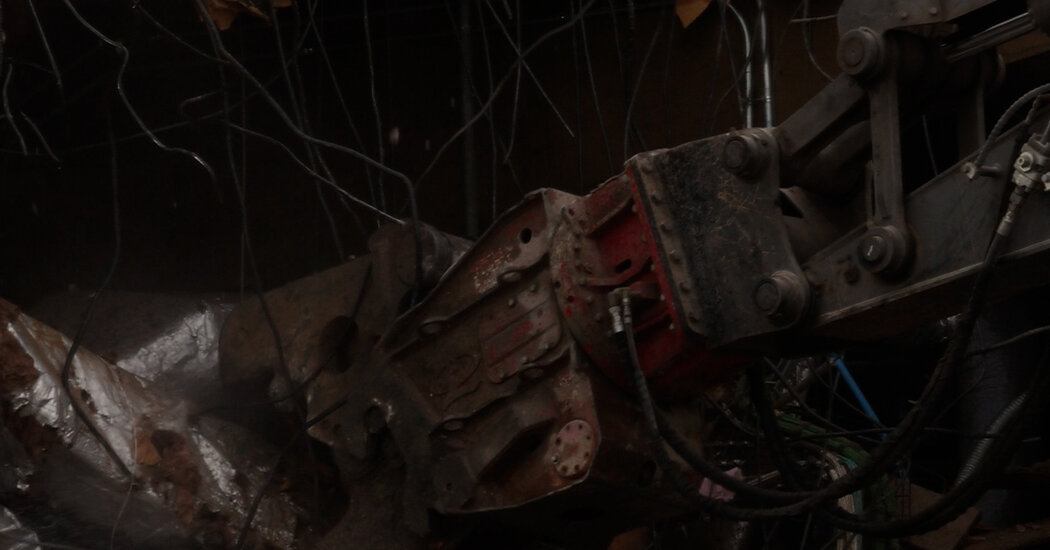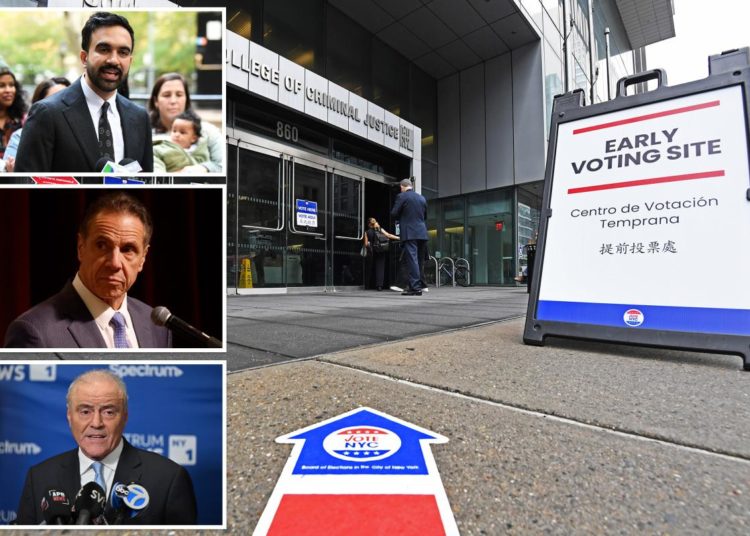The gold in the Oval Office can be scraped off by a future president. The Rose Garden lawn can be replanted, reversing the experiment of turning it into a Mar-a-Lago-style patio.
But the destruction of the East Wing is different, for two reasons that may explain why the images of giant metal claws ripping down a symbol of American power have struck such a chord in Washington and beyond.
First is the permanence of the act — once torn down, it is hard to imagine that the East Wing will ever be recreated. For President Trump, of course, that was the point. He learned that lesson in his New York real estate days, when he was known to bring out the wrecking balls to turn a vision into a fait accompli. Once his $300 million ballroom rises in its place, he may be betting that how it got there will be all but forgotten.
But perhaps more important, and more telling, is how Mr. Trump went about it: the initial claim that his new ballroom would not be “touching” the White House, and the absence of notice when that changed. Then, the elaborate descriptions by White House officials of the legal loopholes that made it perfectly fine to destroy a wing of the people’s house without consultation about whether Mr. Trump’s 90,000-square-foot ballroom was worth the historical or architectural trade-offs.
From the first day of his second term, Mr. Trump has taken an ends-justify-the-means attitude toward his presidency. Consultation and legal approvals are for losers. Winning the election, he has argued, is a license to kill — or to bulldoze. In recent weeks, though, that approach has become more brazen, proving the Washington adage that the most outrageous things that happen in the city take place in plain sight.
In that regard, the tear-down of what was once the gracious entrance for visitors and attendees of state dinners seemed an all-too-perfect metaphor for Mr. Trump’s approach to expanding presidential power.
It was striking that, with the machinery still ripping away the last of the structure that two Roosevelts built, Mr. Trump was on the other side of the White House complex declaring that he had little intention of going to Congress to seek authorization for the lethal strikes, of questionable legality, that he has been conducting in waters off Venezuela and Colombia.
Other presidents have sought approval to use military force in ongoing conflicts, a legal nicety that brings Congress into the decision making, as the founders intended, even if the final result is short of a formal declaration of war. Mr. Trump said he saw no need. “I think we are going to kill people that are bringing drugs into our country, OK? We are going to kill them, you know? They are going to be, like, dead.”
If cutting the size of government is the goal, don’t spend much time worrying about seeking congressional assent to eliminate multibillion-dollar programs Congress created to feed and provide medical care to the world’s poor. Before he dismantled the East Wing, the president did the same to the Education Department and the Voice of America. Americans elected him to get things done, he explained with a shrug, making clear that the lesson from his first term was that bureaucrats, judges and review panels would only frustrate his plans.
He did the same with the procurement of a new Air Force One, taking a “free” gift from the government of Qatar and then diverting nearly $1 billion in funds for updating the nuclear arsenal, apparently to make the plane airworthy for a president. The new ballroom is free as well — until donors with business before the government seek some consideration.
It didn’t have to play out this way.
In the case of the East Wing, Mr. Trump could have followed the example of Harry Truman, who oversaw the complete gutting of the White House in 1948 — driven by the fear that the existing structure might fall down. “The floors pop and the drapes move back and forth,” Mr. Truman wrote to his wife, Bess, in June 1945, adding that he expected to hear the ghosts of Andrew Jackson and Theodore and Franklin Roosevelt arguing. A few years later he discovered that the beams were sagging and the place needed to be torn down or gutted.
But Truman kept the outer structure, historians note, so that the nation did not have to see the complete dismantlement of the symbol of the state. And he created a commission, made up largely of senators and congressmen, to oversee the process. Taxpayer dollars covered the renovation, which meant it could all be openly debated in Congress. As with most renovations of the seat of power, there was predictable political uproar over the cost and objections, now largely forgotten, to the addition of the Truman Balcony overlooking the South Lawn.
Mr. Trump’s early comments suggested that, like Truman, he was sensitive to keeping the White House intact. Whenever he decided that was not possible — the White House has not said when he came to that conclusion — he could have made a persuasive case to the public that the historic value of the East Wing was limited, especially when weighed against the benefits of holding thousand-person celebrations.
After all, Lincoln never walked the halls of the East Wing. In his day, that side of the White House was used to pipe fresh spring water into what was then known as the Executive Mansion.
The original East Wing, built by Theodore Roosevelt as a modest entryway for visitors, was replaced eight decades ago by a utilitarian building that mostly provided cover for Franklin D. Roosevelt’s bomb shelter.
(Today that shelter is the newly expanded, attack-resistant “Presidential Emergency Operations Center,” directly under the East Wing. White House officials, citing security needs, won’t discuss how the construction of the giant ballroom might affect the emergency facility, whose last intense use came after the first attack on Sept. 11, 2001, when Vice President Dick Cheney was hustled into the center.)
But Mr. Trump didn’t even try to explain the trade-offs, likely because the very discussion might have delayed his goal: to build a ballroom that he could inaugurate, and preside over, before leaving office. He likely anticipated objections from groups like the National Trust for Historic Preservation, whose president and chief executive, Carol Quillen, issued a statement warning that the sheer size of the ballroom violated the concept of the White House grounds from when the building was first envisioned in 1792. It “may also permanently disrupt the carefully balanced classical design of the White House with its two smaller, and lower, East and West Wings,” she wrote.
But by the time Ms. Quillen issued her objections, the tear-down was well underway, one of the few active federal projects during a government shutdown now stretching into its fourth week.
Mr. Trump has heard such objections before, back to the days when he promised to donate friezes on the Bonwit Teller department store to a museum, to clear the way for what became Trump Tower. (The friezes were destroyed as the building came down.)
So early in his second term he appointed a loyalist, Will Scharf, as chairman of the National Capital Planning Commission, created more than 70 years ago to approve federal construction in the District of Columbia. Mr. Scharf, who also holds a post at the White House, declared at a public hearing on Sept. 4 that the commission only has control over what he called “vertical build,” and not on the demolition that precedes it.
“It is, in fact, the case that this commission does not have jurisdiction and it has long denied that it has jurisdiction over demolition and site preparation work on federal buildings and federal property,” Mr. Scharf said. “What we deal with is essentially construction.”
The White House has not yet submitted its plans for the ballroom to the commission, which has other Trump appointees who may speed it through. But Mr. Trump has already won his victory. The commission won’t be weighing the ballroom plan against the value of the existing structure; it will be measuring it against a jumbled pile of stone and reinforcement bars.
By the time Mr. Trump leaves office, the White House will look different. So will the country. He understands, in ways he did not in the first term, that some things in government can be reversed. But some cannot: What the Department of Government Efficiency closed will likely never be reopened, and the ballroom, for better or worse depending on your politics, seems here to stay.
David E. Sanger covers the Trump administration and a range of national security issues. He has been a Times journalist for more than four decades and has written four books on foreign policy and national security challenges.
The post Amid the Rubble of the East Wing, Lessons in How Trump Exercises Power appeared first on New York Times.




